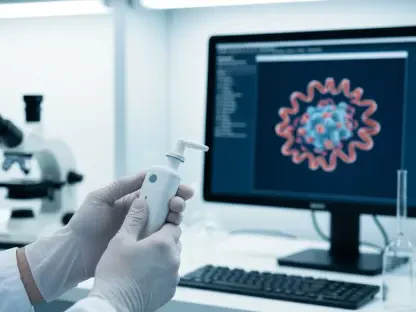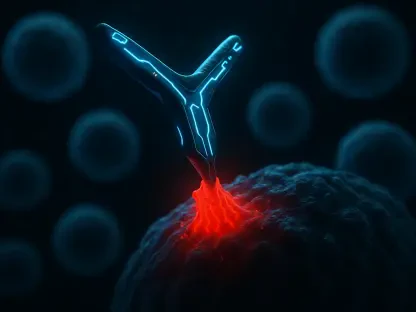In recent years, the scientific community has increasingly focused on stem cell therapy as a revolutionary approach to treating neurodegenerative diseases, including dementia. As researchers delve deeper into understanding the efficacy and safety of stem cell applications, the question arises: Can this therapeutic avenue truly alter or reverse the course of dementia? Given the complexities involved in neurodegeneration, the exploration into stem cell therapy is not only a testament to human innovation but a pivotal step toward potentially transformative treatment options.
The Rise of Stem Cell Therapy in Medicine
Groundbreaking Concepts and Discoveries
Stem cells have captivated scientific interest due to their unique ability to differentiate into various specialized cells, offering promising avenues in regenerative medicine. Pioneering breakthroughs have highlighted the potential of stem cells, especially mesenchymal stem cells (MSCs), neural stem cells (NSCs), and induced pluripotent stem cells (iPSCs). Each type brings distinct advantages to the realm of therapy, enabling innovative approaches to medical treatments. MSCs are known for their regenerative capabilities, aiding tissue repair and reducing inflammation. NSCs hold the promise of regenerating neurons, potentially addressing neuronal loss in dementia. Meanwhile, iPSCs provide a versatile platform for personalized medicine, allowing stem cells to be derived from a patient’s own tissues and tailored to specific needs.
The regenerative prowess of stem cells has been widely recognized, paving the way for their integration into various medical applications. Their ability to transition into different cell types makes them invaluable for replacing damaged or lost tissues. Stem cell therapy’s significance is further underscored by its potential to offer novel solutions for conditions currently lacking effective treatments. The ongoing exploration of these cells marks a promising frontier, driven by the goal of leveraging their inherent properties to restore health and functionality in diseased or damaged tissues.
Targeting Neurodegenerative Disorders
In the realm of neurodegenerative disorders, stem cell therapy presents an opportunity to directly address the underlying mechanisms of diseases like Alzheimer’s and Parkinson’s. While current treatments focus largely on alleviating symptoms, they often fall short in altering the progressive nature of neuronal deterioration. Stem cell therapy, however, offers a paradigm shift, aiming to combat the root causes of neurodegeneration. This innovative approach seeks to regenerate neurons and restore synaptic function, providing hope for a more effective treatment strategy.
Neurodegenerative diseases are marked by complex processes involving cellular death and tissue damage. Alzheimer’s disease, for example, is characterized by amyloid-beta plaques and neurofibrillary tangles, contributing to cognitive decline. Parkinson’s disease involves the loss of dopamine-producing neurons, leading to motor dysfunction. Stem cell therapy seeks to address these intricate mechanisms through targeted interventions. By harnessing the regenerative capabilities of stem cells, researchers aspire to alter the trajectory of these diseases, offering a promising alternative to traditional therapeutic approaches.
Mechanisms of Stem Cell Therapy
Underlying Biological Processes
Stem cell therapy leverages several biological processes to deliver potential therapeutic effects in neurodegenerative diseases. One significant mechanism is neurogenesis, where stem cells support the generation of new neurons, thereby replenishing lost or damaged brain cells. This process is crucial in neurodegenerative conditions, where neuronal death is a hallmark feature. Additionally, stem cells exhibit neuroprotective properties, shielding neurons from further damage through various biochemical interactions. This protection is particularly vital in degenerative diseases where progressive neuronal loss occurs.
Another pivotal aspect of stem cell therapy is its ability to modulate inflammatory responses within the brain. Stem cells can interact with immune cells, altering the inflammatory environment that often exacerbates neuronal damage. This modulation is further complemented by synaptic connectivity improvement, where stem cells potentially enhance inter-cellular communication within the brain. Such outcomes are essential for restoring cognitive functions, often compromised in dementia and related disorders. By addressing multiple pathways, stem cell therapy presents a multifaceted approach to combating neurodegeneration.
Preclinical Promises and Findings
Preclinical studies have offered a promising glimpse into stem cell therapy’s potential, particularly through the use of animal models like transgenic mice. These studies have demonstrated significant SCT-induced improvements, including enhanced spatial memory and reduced neuroinflammation. Such findings are pivotal, suggesting that stem cells can positively influence cognitive processes. Additionally, preclinical research highlights stem cells’ capability to protect against amyloid toxicity—crucial in Alzheimer’s disease, where amyloid-beta plaques contribute to neuronal death.
Despite the encouraging results from animal studies, translating these findings to human applications presents challenges. Preclinical successes suggest that stem cells could offer therapeutic benefits, but the leap to human trials requires carefully navigating biological, ethical, and regulatory barriers. The complexity of human diseases and variability among patient populations necessitate further exploration to ensure consistent efficacy and safety. As researchers work to bridge this gap, the promising results from animal models remain a beacon of hope, guiding future clinical efforts in stem cell therapy.
The Clinical Landscape
Emerging Clinical Trials
Clinical trials are underway to explore the therapeutic potential of stem cells in treating dementia, marking a vital step in translating preclinical promises into practical applications. These trials investigate various stem cell types and delivery methodologies, assessing their feasibility and safety in human subjects. Intravenous infusions, characterized by their relative safety and attainability, are deemed favorable in initial studies. Conversely, more invasive techniques, such as intracerebral injections, present higher risks, necessitating careful evaluation.
To date, 21 clinical trials have explored diverse strategies and outcomes, highlighting the experimental nature of stem cell therapy in dementia treatment. As researchers and clinicians strive to refine these methodologies, understanding the safety profiles of different approaches is crucial. Favorable results, especially for less invasive techniques, are promising indicators of stem cell therapy’s potential as a viable therapeutic option. However, the journey to integrating SCT into dementia care is marked by a need for thorough investigation and optimization.
Evaluating Efficacy and Limitations
While stem cell therapy holds transformative potential, clinical outcomes thus far reveal mixed effectiveness, underscoring the necessity for ongoing research. Variability in results can be attributed to factors such as patient heterogeneity and differences in stem cell sources utilized across trials. Such discrepancies pose challenges in establishing standardized methodologies that ensure consistent efficacy. Additionally, cognitive assessment methodologies present complexities in measuring therapeutic success, highlighting the need for precision in evaluating SCT interventions.
As researchers work to overcome these limitations, optimizing SCT methodologies becomes paramount before it can be mainstreamed for dementia treatment. Ensuring stem cells are tailored to specific patient needs and identifying the most effective delivery routes are essential considerations in advancing the therapy. The road ahead for stem cell therapy involves addressing these challenges with rigor and innovation, paving the way for its potential integration into standardized dementia care.
Bridging the Gap: Preclinical and Clinical
Translational Research Focus
Translational research plays a pivotal role in bridging the gap between preclinical findings and clinical applications. Efforts are intensifying to align promising results from animal models with human trials, addressing the challenges associated with translation. Collaboration among researchers is essential for overcoming translational hurdles, fostering an environment where scientific knowledge can be exchanged and refined. These collaborative endeavors aim to tackle the complex landscape of regulatory barriers, ultimately enhancing the integration of SCT into standardized care.
Regulatory challenges pose significant obstacles in advancing stem cell therapy, necessitating careful consideration of ethical implications and adherence to stringent guidelines. Ethical considerations in SCT research require balancing scientific innovation with patient safety, ensuring therapeutic approaches are both effective and responsible. Continuous refinement in delivery methods, cell types, and sources is pursued to maximize therapeutic potential. As the field progresses, addressing these barriers remains a critical focus in transforming SCT into a viable treatment option for neurodegenerative diseases like dementia.
Hopes and Future Directions
While the transformative potential of stem cell therapy is undeniable, unlocking its full potential requires further innovation and precision in applications, fostering improvements in efficacy and safety. Research efforts are concentrated on refining SCT methodologies to tailor therapeutic approaches to individual patient needs, ensuring stem cells can deliver optimal benefits. Clinicians and researchers remain optimistic, yet caution the necessity for rigorous inquiry to ensure responsible therapeutic applications.
As stem cell research progresses, SCT could emerge as a pivotal treatment option, potentially altering the landscape of neurodegenerative care. Insights into SCT growth underscore the collaborative potential and scientific determination driving advancements in the field. The pathway to mainstream SCT for dementia is guided by scientific advancements, emphasizing the importance of ongoing research to navigate the complex terrain of regenerative medicine. These endeavors hold promise for a future where stem cell therapy may offer transformative solutions for individuals grappling with dementia.
Intersection of Innovation and Reality
Navigating the Research Terrain
Stem cell therapy represents both a promising frontier and an experimental domain, characterized by ongoing exploration and scientific rigor. The quest for standardized methodologies across clinical trials remains crucial in achieving consistent findings, enhancing the reliability and reproducibility of SCT interventions. Translational success from animal models to humans is a key research goal, necessitating careful navigation of technical, regulatory, and biological barriers for widespread acceptance of SCT in neurodegenerative treatment.
Scientific exploration continues to propel the prospects of reversing neurodegenerative diseases, fostering an era of optimism in therapeutic innovation. As researchers navigate this complex terrain, balancing scientific advancement with ethical considerations remains paramount. The ongoing pursuit of standardization and refinement underscores the commitment within the scientific community to harness stem cell therapy’s full potential, paving the way for a future where SCT may offer transformative solutions for neurodegenerative conditions like dementia.
Pioneering the Future of Dementia Treatment
In recent times, there has been growing interest in the field of stem cell therapy within the scientific community, particularly as it pertains to treating devastating neurodegenerative diseases like dementia. The potential of stem cell therapy lies in its ability to regenerate damaged tissues and cells, offering hope where traditional treatments might fall short. Researchers are keenly focused on unraveling the intricacies of how stem cells can be effectively and safely employed in medical practice. This leads to an essential inquiry: Can stem cell therapy genuinely change the trajectory or even reverse the progression of dementia? Given the intricate nature of neurodegeneration, stem cell research stands as both a beacon of human ingenuity and a critical milestone in the quest for groundbreaking treatment strategies. The exploration into this therapeutic path underscores the significance of continued innovation and collaboration in medical science. As stem cell therapy emerges as a promising frontier, it challenges scientists to push boundaries and seek solutions previously unimaginable, potentially offering relief to millions suffering from these debilitating conditions.









